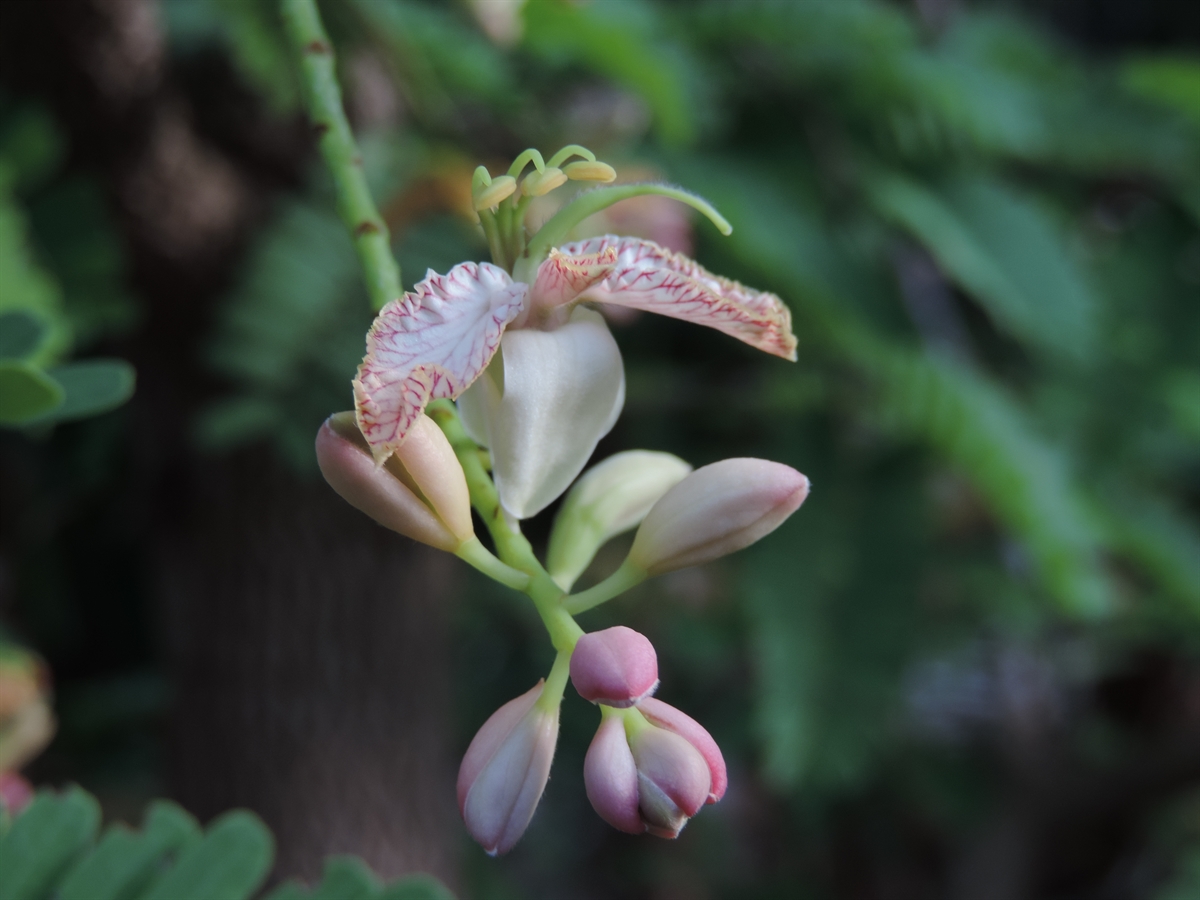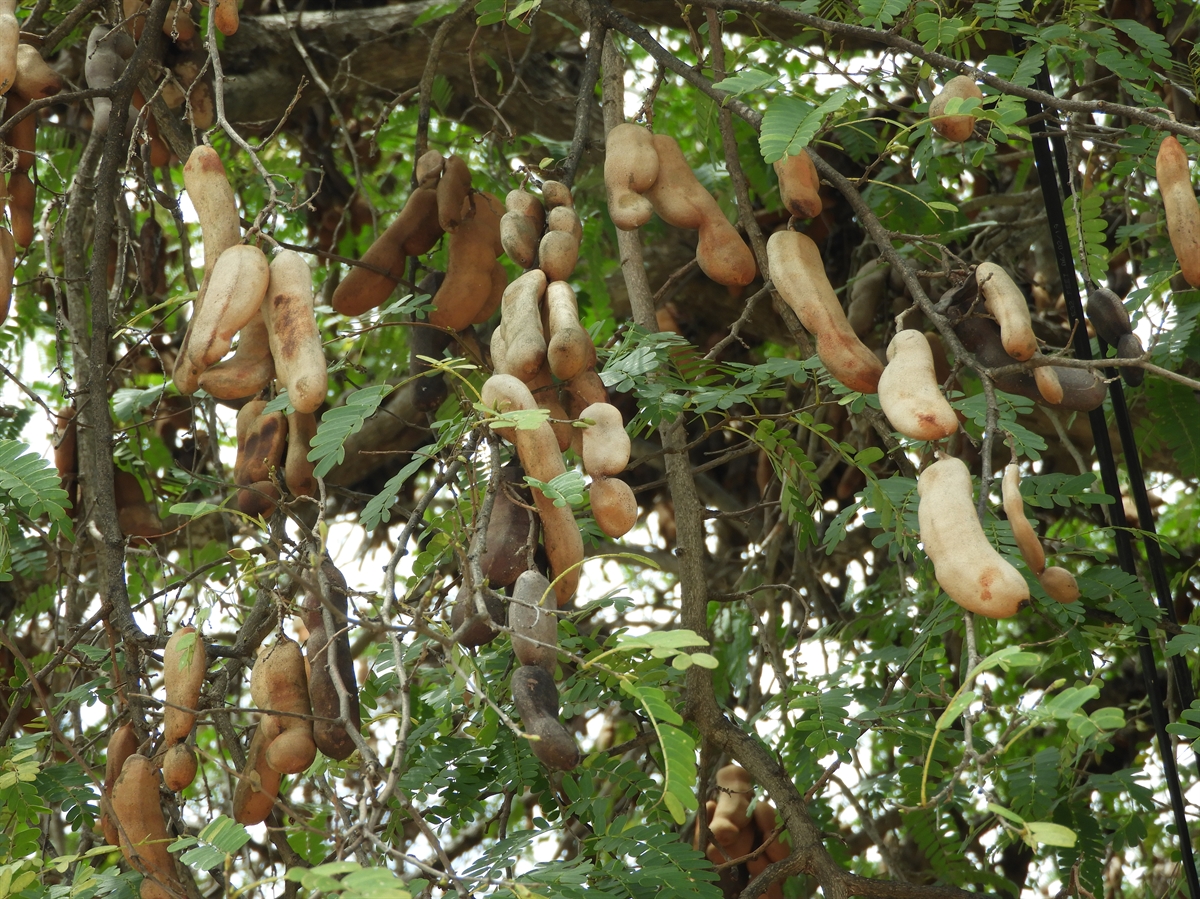Habit: Tamarindus indica grows as a tree up to 20 m in height and 1 m in diameter. New vegetation is pubescent. The evenly, pinnately compound leaves are arranged alternately and up to 12 cm in length. The 10-20 pairs of leaflets are oblong with a rounded or retuse leaf apex and an entire margin.
The complete, perfect, zygomorphic flowers are arranged in terminal or axillary racemes. The calyx 5 are partially fused, pubescent green sepals forming a tube with the sepal lobes the same length as the tube. The corolla has 5 orange/yellow/pink petals, the upper enlarged to form the banner and the lower 2 fused to form the keel. There are 3 stamens and 7 staminodes. The ovary is superior and has a single locule with numerous seeds. The fruit is a brown legume to 15 cm in length.
Habitat: Tamarindus indica grows in Human Altered environments (old fields, yards roadsides).
Distribution: Tamarindus indica is NOT native to the Lucayan Archipelago and does not occur in natural areas. It is native to Madagascar but is widely grown around the world as a fruit tree.
Medicinal/Cultural/Economic usage: Tamarindus indica is used medicinally in the Lucayan Archipelago to treat eye diseases, colds and flu, as well as gastrointestinal and circulatory issues.
Tamarindus indica is grown as a fruit tree and is used to make jellies, jams and sauces.

